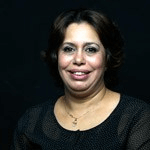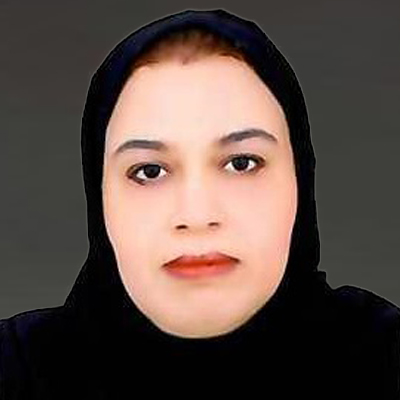
Duration
Four Years
Medium of instruction
English
Degree awarding body
SCD
Program Mission
The mission of the photography program is to provide a broad-based education in the production of photographic images through traditional and digital photographic mediums to contribute and practice effectively in their field.
Accreditation
Institutionally Accredited by OAAAQA & Overseen by the MOHERI in the Sultanate of Oman.
Substantial Equivalency of the Bachelor of Arts in Photography from the National Association of Schools of Art and Design (NASAD).
Quality Assurance Certificate from the Accreditation and Quality Assurance Commission for Higher Education Institutions (AQACHEI - Jordan).
Program Description
Photography is visual communication that interprets the world with controlling light. Photography is the craft, science, and experience of image formation. The photography curriculum focuses on the concepts and techniques of transmitting knowledge, thoughts, moods, and feelings by making photographs on a photographic medium and educating students to be qualified photographers. The program includes camera procedures, equipment operation, conventional film production, color, photo composites, art, history, computer software utilization, and implementations of different subjects.
Program Objectives
- Practice digital photography's artistic and technical aspects to improve their visual vision.
- Develop professional photography skills to produce creative work.
- Employ the main principles of digital photography to control equipment effectively.
- Use different techniques, methods, and equipment to create advanced photographic images.
Program Learning Outcomes
- Practice general educational knowledge such as research skills, business, and psychological principles to apply them in their respective profession.
- Develop English proficiency level to communicate effectively using art and design terminology.
- Apply art and design elements and principles to create artwork.
- Identify themselves creatively in photographic media to implicate contemporary photographic art.
- Develop superiority in photographic vision and professional skills to domain the photographic market.
- Show professional and technical skills necessary to pursue the career path of their choice.
- Perform professionally as a highly trained photographer equipped to exhibit and market their photographs.
- Value and develop an awareness of the latest photographic styles to practice advanced skills creatively.
Career Opportunities
Photography graduates have potential careers in commercial photography, photojournalism, fine art exhibition and installation, media outlets such as magazines and newspapers either on a freelance or editorial basis, galleries, museums, and government.
Year
Semester 1
ART510
Drawing I
3
DES511
Design Studio I A/B *
4
DES512
Technical Graphics I
3
DES513
Introduction to Design
3
ENG500
English for Art & Design I
3
LRT600
Learning Research Techniques
3
Semester 2
PHO510
Photography I *
3
ART610
Drawing II
3
DES611
Design Studio II A/B *
4
ENG600
English for Art & Design II
3
GRA510
Introduction to Computer Graphics
3
Year
Semester 1
ART711
History of Art I
3
PHO610
Digital Video Basics
3
ELE500
Elective
3
ENG800
English Academic Writing
3
PHO611
Optics
3
PHO612
Photography II
3
Semester 2
ARA510
Arabic Creative Writing
3
ENG700
Fundamentals of Oral Communication
3
GRA610
Intermediate Computer Graphics
3
PHO710
Photography Lighting
3
PHO613
History of Photography
3
PHO711
Photojournalism
3
Year
Semester 1
ART713
History of Art II
3
CST510
History of Oman Civilization
3
ELE700
Elective
3
PHO810
Photography III
3
PHO712
Multi Format Photography
3
PHO713
Digital Dark Room
3
Semester 2
ART812
History of Modern Art
3
PHO716
Advanced Digital Photography
3
PHO812
Portrait Photography
3
PHO813
Commercial Photography I
3
PHO714
Photometry and Colorimetry
3
Year
Semester 1
PHO814
Introduction to Contemporary Photography
3
ENT600
Entrepreneurship
3
PHO815
Landscape & Architecture Photography
3
PHO816
Scientific Photography
3
PSY500
Introduction to Psychology
3
Semester 2
PHO817
Digital Photography Printing
3
PHO818
Photography Internship
1
PHO715
Advanced Digital Video
4
PHO819
Senior Study
5
Semester 1
ART510
Drawing I
3
DES511
Design Studio I A/B *
4
DES512
Technical Graphics I
3
DES513
Introduction to Design
3
ENG500
English for Art & Design I
3
LRT600
Learning Research Techniques
3
Semester 2
PHO510
Photography I *
3
ART610
Drawing II
3
DES611
Design Studio II A/B *
4
ENG600
English for Art & Design II
3
GRA510
Introduction to Computer Graphics
3
Semester 1
ART711
History of Art I
3
PHO610
Digital Video Basics
3
ELE500
Elective
3
ENG800
English Academic Writing
3
PHO611
Optics
3
PHO612
Photography II
3
Semester 2
ARA510
Arabic Creative Writing
3
ENG700
Fundamentals of Oral Communication
3
GRA610
Intermediate Computer Graphics
3
PHO710
Photography Lighting
3
PHO613
History of Photography
3
PHO711
Photojournalism
3
Semester 1
ART713
History of Art II
3
CST510
History of Oman Civilization
3
ELE700
Elective
3
PHO810
Photography III
3
PHO712
Multi Format Photography
3
PHO713
Digital Dark Room
3
Semester 2
ART812
History of Modern Art
3
PHO716
Advanced Digital Photography
3
PHO812
Portrait Photography
3
PHO813
Commercial Photography I
3
PHO714
Photometry and Colorimetry
3
Semester 1
PHO814
Introduction to Contemporary Photography
3
ENT600
Entrepreneurship
3
PHO815
Landscape & Architecture Photography
3
PHO816
Scientific Photography
3
PSY500
Introduction to Psychology
3
Semester 2
PHO817
Digital Photography Printing
3
PHO818
Photography Internship
1
PHO715
Advanced Digital Video
4
PHO819
Senior Study
5
Course Details






Head of Fine Art

Welcome to a world where art, passion, and innovation come alive. We are truly pleased to have you join our community. Our dedicated faculty and inspiring environment are here to support you every step of the way. In the fields of fine arts, photography, and fashion design, you will have the opportunity to discover your unique voice, sharpen your skills, and push creative boundaries.
Dr.Rahma Al Rashdi,
Head of Fine Art
Scientific College of Design

1
Success in General Education Diploma or its Equivalent.2
The student should get a minimum grade of C- in Design Studio I & Design Studio II courses.3
The availability of a digital camera SLR 35mm.BA - Photography
Tuition Fees
| Duration | Credit Hours | Fees | Other Fees | Sub Total | |
|---|---|---|---|---|---|
| General Foundation Program | 3 Semesters | - | 2,575 OMR | - | 2,575 OMR |
| Design Foundation Program | 2 Semesters | 33 | 2,640 OMR | 250 OMR | 2,890 OMR |
| Bachelor Degree | 6 Semesters | 99 | 7,920 OMR | 750 OMR | 8,670 OMR |
| Grand Total | 14,135 OMR | ||||
* Fees / tuitions are subject to changed accoridng to the college financial polcies / procedures and upon MoHERI approval
Finance Details
Oman Arab Bank
3128231666500
Bank Muscat
0313029205120016
Sohar International Bank
043020017921
*All payment are accepted through bank deposit.













